The Folk Music Revival – Greenwich Village – 1950s to 1965
Before we wander off into the brave new world of the 60s traipsing behind the Merseybeat, MODS, The Beatles, Carnaby Street and all the rest that swinging London had to offer, let’s have a look at the folk revival. In America, the folk movement had started in the 1940s, gathered momentum in the late 1950s and faded in the mid 1960s. But the songs live on and several folksters have proven longevity and stardom, personified by the Queen and King of folk – Joan Baez and Bob Dylan.
Early Days – 1950s – Woody Guthrie
Woody Guthrie travelled the dusty roads across the USA as a folk and roots pioneer in the 40s and 50s. Pete Seeger and the Weavers were in the folk vanguard and early recordings reflected their concern for truth, the downtrodden and better ways of living, also with an emphasis on better ways to earn a living. They poked a questioning finger at the accepted values of modern American ways – the race divide and the rat race.
Folk songs appealed to freedom of the spirit. It was uncomplicated – pick up your guitar and go – travel the highways and railways. It had simplicity and purity, and expressed joy and laughter, politics and protest – a D-I-Y singalong.
The trio of early folksters – Woody Guthrie, Pete Seeger & the Weavers set the early standards and performance benchmarks – vigorous, daring, challenging – and all in tune!
The folkster torch bearers sang and marched during the McCarthy Era and the dark days of the ‘Ban the Bomb’ protests. Pete Seeger, acolyte for Woody Guthrie, with the Weavers led the way. Woody will always be remembered for This land is your land and Pete Seeger for the witty Little Boxes, a song reflecting sheltered lives in the suburbs and the inflated role of real estate developers in our lives.
Folk Songs and big Bucks
But in reality – and we will return to this theme time and time again – it’s all about the money. You’ve got to appeal to the mass public – the great unwashed – and sell lots of records. Enter stage right – The Kingston Trio and Peter Paul & Mary. The Kingston Trio recorded for Capitol records and they sold millions starting with Tom Dooley and buttering up with (yes you know) – Greenback Dollar (you got it in one).
Peter Paul & Mary were also a designer group brought together by Albert Grossman and signed to CBS (and not the last designer group to hit the airwaves) to create a contemporary of the Kingston Trio. Peter Yarrow, Noel Paul Stookey and Mary Travers – two beards and a pretty face had a sophisticated approach and many big hits (500 Miles, If I had a Hammer, Lemon Tree) and had worked the coffee house circuit as a group. They also sold millions and were early interpreters of Dylan songs and also renowned for children’s songs, particularly Puff the Magic Dragon. Their old albums pop up at the Salvos and St Vinnie’s boxes and they are almost always in good condition despite their age. The fans who bought these albums took good care of them.
Greenwich Village – Dylan & Baez
The public face of Folkdom presented some serious players and contenders for fame, fortune and destiny. A major part of the action happened in Greenwich Village, a residential neighbourhood on the west side of Manhattan, in New York City. The list of personages is long; the output breathtaking:
Tom Rush
Judy Collins
Fred Neil
Buffy Sainte Marie
Phil Ochs
Dave Van Ronk
Tom Paxton
Eric Anderson
Paul Simon
Joni Mitchell
Odetta
Koerner, Ray & Glover
Bob Dylan
Joan Baez
Mimi Farina
Jim Kweskin Jug Band
At the urban refuge in Greenwich Village, a diffuse group of young aspiring singers and songwriters congregated and tales are legion. Bob Dylan arrived in NYC in 1960 and the rest – as they say – is history. Bob Dylan was signed to CBS in 1962 and his first album simply titled ‘Bob Dylan’, described as a stunning debut, sank without a trace. Joan Baez, who had already signed with the classical label Vanguard, with three released albums under her belt by 1962, was a successful folk singer on the scene, possessing a beautiful soprano voice, and leading the folk protest.
Dylan was recognised as idiosyncratic, caustic, a poet with protest anthems to march for, flags to fly and records to sell. Bob Dylan and Joan Baez scaled the charts and overhauled the commercial sounds of the Kingston Trio, Chad Mitchell Trio and Peter Paul & Mary. Buffy Sainte Marie joined the parade and her song Universal Soldier appeared in her debut album “It’s my Way” (1964), and in 1965 would hit the singles charts courtesy of Donovan, who released the song in unison with the Vietnam War protests – a thunderstorm heralding bad dark days to come. It was a busy exciting hectic scene.
In Greenwich Village other voices sought our attention – Tom Rush and Fred Neil both on the Elektra label –both distinctive and with edge. Tom Rush’ self titled 1964 album is chock full of train and tramp songs, chomping guitar and hollers. Fred Neil’s 1964 album Bleecker & MacDougal aka Little Bit of Rain is full of cries of pain and loneliness and the “other side of life”. Essentially Fred Neil’s official recorded output is only two albums and both are magnificent. His fame has come from other artists recording his material and the best known is probably Harry Nilsson’s version of Everybody’s talkin’, which reached #2 on the Billboard Adult Contemporary Charts in 1972 featuring in the soundtrack of Midnight Cowboy. Along with the hollers of Tom Rush, the blues and rags of ‘Spider’ John Koerner, Dave ‘Snaker’ Ray, and Tony ‘Little Sun’ Glover were released on the Elektra label in 1963. Koerner, Ray and Glover appeared at the Newport Folk Festival in 1964 and their records are still being reissued today.
Other survivors and heroes of this folk era include Judy Collins, a wonderful singer with many albums to her credit and also a great interpreter of Dylan. Phil Ochs, who unfortunately committed suicide in 1975, produced many creditable albums and we will talk about his life and influence in another chapter. Joni Mitchell, a chanteuse from Canada, spent some time in Greenwich Village before heading to sunnier pastures on the West Coast. And her career shines on. Paul Simon, having little success at this time, travelled to UK and on return teamed up again with Art Garfunkel to bring us the Sounds of Silence on their 1964 album Wednesday Morning 3AM.
Newport 1965
Dylan had released a further six albums by mid 1965. He had appeared at the Newport Folk Festival in 1963 and 1964. When he mounted the stage on the 25th July 1965 with most of the Paul Butterfield Band, including guitar maestro Michael Bloomfield in tow, and blasted the folk fans with a full-on electric blues band, the folk revival was over. Dylan did not return to Newport for 37 years.
Whilst the revival might have been over and the trend was towards pop and rock, stalwarts Peter Paul & Mary gave it a last hurrah on their 1967 Album 1700 which included two bright pop songs – Leaving in a Jet Plane and I dig rock and roll music. John Denver, not yet famous, wrote the first song and it hit #2 on the Billboard charts when released as a single in 1969 by Peter Paul & Mary. I dig, composed by PPM was a song ridiculing rock, its lyrics and performers but sounding just like the Mamas and the Papas, the song sold and reached #9 on the Billboard Charts. Life goes on.
The Folk Revival might have been over but it has left a marvellous legacy – some beautiful music and great performers and we will revisit this era again. Check out some of the albums, performances and songs.



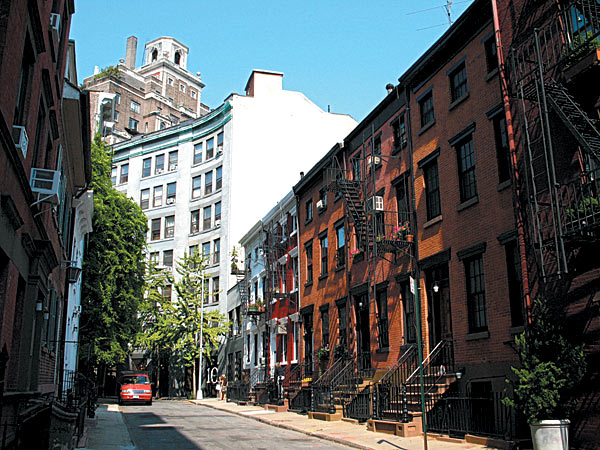

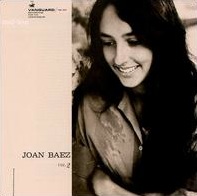

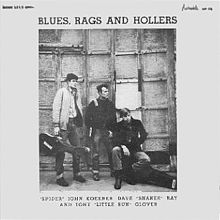
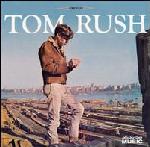
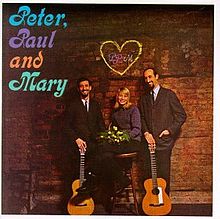
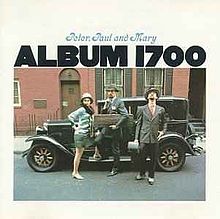

Leave a Reply